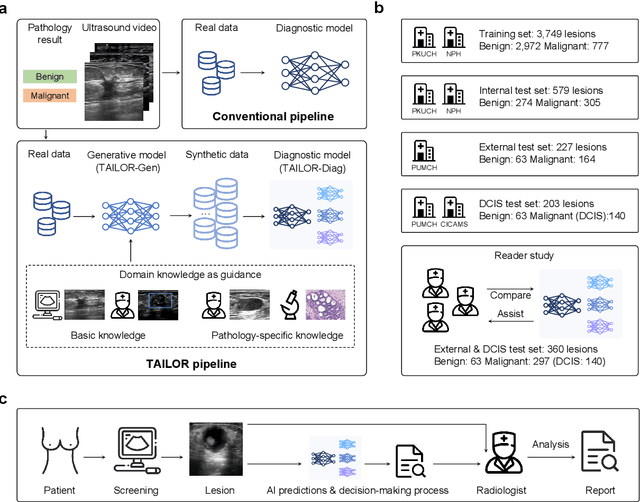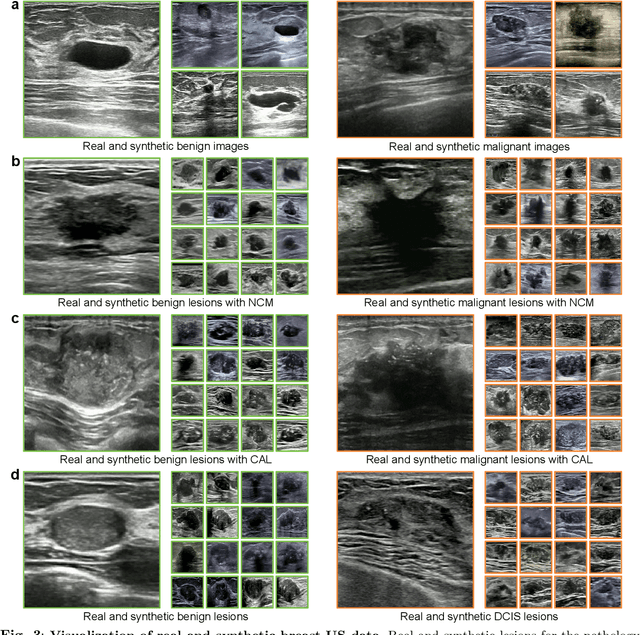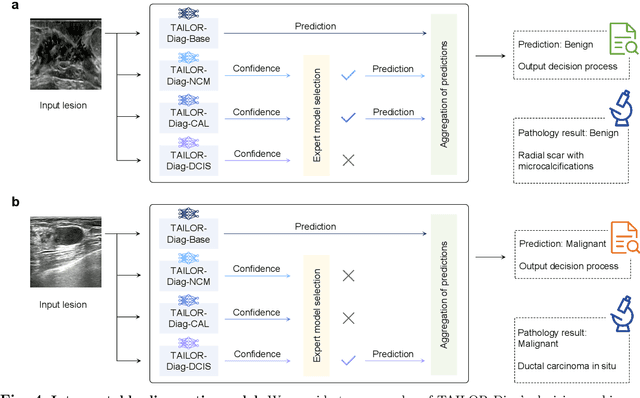Di He
AlphaDecay:Module-wise Weight Decay for Heavy-Tailed Balancing in LLMs
Jun 17, 2025Abstract:Weight decay is a standard regularization technique for training large language models (LLMs). While it is common to assign a uniform decay rate to every layer, this approach overlooks the structural diversity of LLMs and the varying spectral properties across modules. In this paper, we introduce AlphaDecay, a simple yet effective method that adaptively assigns different weight decay strengths to each module of an LLM. Our approach is guided by Heavy-Tailed Self-Regularization (HT-SR) theory, which analyzes the empirical spectral density (ESD) of weight correlation matrices to quantify "heavy-tailedness." Modules exhibiting more pronounced heavy-tailed ESDs, reflecting stronger feature learning, are assigned weaker decay, while modules with lighter-tailed spectra receive stronger decay. Our method leverages tailored weight decay assignments to balance the module-wise differences in spectral properties, leading to improved performance. Extensive pre-training tasks with various model sizes from 60M to 1B demonstrate that AlphaDecay achieves better perplexity and generalization than conventional uniform decay and other adaptive decay baselines.
Diagnosing and Improving Diffusion Models by Estimating the Optimal Loss Value
Jun 16, 2025Abstract:Diffusion models have achieved remarkable success in generative modeling. Despite more stable training, the loss of diffusion models is not indicative of absolute data-fitting quality, since its optimal value is typically not zero but unknown, leading to confusion between large optimal loss and insufficient model capacity. In this work, we advocate the need to estimate the optimal loss value for diagnosing and improving diffusion models. We first derive the optimal loss in closed form under a unified formulation of diffusion models, and develop effective estimators for it, including a stochastic variant scalable to large datasets with proper control of variance and bias. With this tool, we unlock the inherent metric for diagnosing the training quality of mainstream diffusion model variants, and develop a more performant training schedule based on the optimal loss. Moreover, using models with 120M to 1.5B parameters, we find that the power law is better demonstrated after subtracting the optimal loss from the actual training loss, suggesting a more principled setting for investigating the scaling law for diffusion models.
Theoretical Benefit and Limitation of Diffusion Language Model
Feb 13, 2025Abstract:Diffusion language models have emerged as a promising approach for text generation. One would naturally expect this method to be an efficient replacement for autoregressive models since multiple tokens can be sampled in parallel during each diffusion step. However, its efficiency-accuracy trade-off is not yet well understood. In this paper, we present a rigorous theoretical analysis of a widely used type of diffusion language model, the Masked Diffusion Model (MDM), and find that its effectiveness heavily depends on the target evaluation metric. Under mild conditions, we prove that when using perplexity as the metric, MDMs can achieve near-optimal perplexity in sampling steps regardless of sequence length, demonstrating that efficiency can be achieved without sacrificing performance. However, when using the sequence error rate--which is important for understanding the "correctness" of a sequence, such as a reasoning chain--we show that the required sampling steps must scale linearly with sequence length to obtain "correct" sequences, thereby eliminating MDM's efficiency advantage over autoregressive models. Our analysis establishes the first theoretical foundation for understanding the benefits and limitations of MDMs. All theoretical findings are supported by empirical studies.
Enhancing Auto-regressive Chain-of-Thought through Loop-Aligned Reasoning
Feb 12, 2025Abstract:Chain-of-Thought (CoT) prompting has emerged as a powerful technique for enhancing language model's reasoning capabilities. However, generating long and correct CoT trajectories is challenging. Recent studies have demonstrated that Looped Transformers possess remarkable length generalization capabilities, but their limited generality and adaptability prevent them from serving as an alternative to auto-regressive solutions. To better leverage the strengths of Looped Transformers, we propose RELAY (REasoning through Loop Alignment iterativelY). Specifically, we align the steps of Chain-of-Thought (CoT) reasoning with loop iterations and apply intermediate supervision during the training of Looped Transformers. This additional iteration-wise supervision not only preserves the Looped Transformer's ability for length generalization but also enables it to predict CoT reasoning steps for unseen data. Therefore, we leverage this Looped Transformer to generate accurate reasoning chains for complex problems that exceed the training length, which will then be used to fine-tune an auto-regressive model. We conduct extensive experiments, and the results demonstrate the effectiveness of our approach, with significant improvements in the performance of the auto-regressive model. Code will be released at https://github.com/qifanyu/RELAY.
A Foundational Generative Model for Breast Ultrasound Image Analysis
Jan 12, 2025



Abstract:Foundational models have emerged as powerful tools for addressing various tasks in clinical settings. However, their potential development to breast ultrasound analysis remains untapped. In this paper, we present BUSGen, the first foundational generative model specifically designed for breast ultrasound image analysis. Pretrained on over 3.5 million breast ultrasound images, BUSGen has acquired extensive knowledge of breast structures, pathological features, and clinical variations. With few-shot adaptation, BUSGen can generate repositories of realistic and informative task-specific data, facilitating the development of models for a wide range of downstream tasks. Extensive experiments highlight BUSGen's exceptional adaptability, significantly exceeding real-data-trained foundational models in breast cancer screening, diagnosis, and prognosis. In breast cancer early diagnosis, our approach outperformed all board-certified radiologists (n=9), achieving an average sensitivity improvement of 16.5% (P-value<0.0001). Additionally, we characterized the scaling effect of using generated data which was as effective as the collected real-world data for training diagnostic models. Moreover, extensive experiments demonstrated that our approach improved the generalization ability of downstream models. Importantly, BUSGen protected patient privacy by enabling fully de-identified data sharing, making progress forward in secure medical data utilization. An online demo of BUSGen is available at https://aibus.bio.
LarvSeg: Exploring Image Classification Data For Large Vocabulary Semantic Segmentation via Category-wise Attentive Classifier
Jan 12, 2025



Abstract:Scaling up the vocabulary of semantic segmentation models is extremely challenging because annotating large-scale mask labels is labour-intensive and time-consuming. Recently, language-guided segmentation models have been proposed to address this challenge. However, their performance drops significantly when applied to out-of-distribution categories. In this paper, we propose a new large vocabulary semantic segmentation framework, called LarvSeg. Different from previous works, LarvSeg leverages image classification data to scale the vocabulary of semantic segmentation models as large-vocabulary classification datasets usually contain balanced categories and are much easier to obtain. However, for classification tasks, the category is image-level, while for segmentation we need to predict the label at pixel level. To address this issue, we first propose a general baseline framework to incorporate image-level supervision into the training process of a pixel-level segmentation model, making the trained network perform semantic segmentation on newly introduced categories in the classification data. We then observe that a model trained on segmentation data can group pixel features of categories beyond the training vocabulary. Inspired by this finding, we design a category-wise attentive classifier to apply supervision to the precise regions of corresponding categories to improve the model performance. Extensive experiments demonstrate that LarvSeg significantly improves the large vocabulary semantic segmentation performance, especially in the categories without mask labels. For the first time, we provide a 21K-category semantic segmentation model with the help of ImageNet21K. The code is available at https://github.com/HaojunYu1998/large_voc_seg.
Bridging Geometric States via Geometric Diffusion Bridge
Oct 31, 2024Abstract:The accurate prediction of geometric state evolution in complex systems is critical for advancing scientific domains such as quantum chemistry and material modeling. Traditional experimental and computational methods face challenges in terms of environmental constraints and computational demands, while current deep learning approaches still fall short in terms of precision and generality. In this work, we introduce the Geometric Diffusion Bridge (GDB), a novel generative modeling framework that accurately bridges initial and target geometric states. GDB leverages a probabilistic approach to evolve geometric state distributions, employing an equivariant diffusion bridge derived by a modified version of Doob's $h$-transform for connecting geometric states. This tailored diffusion process is anchored by initial and target geometric states as fixed endpoints and governed by equivariant transition kernels. Moreover, trajectory data can be seamlessly leveraged in our GDB framework by using a chain of equivariant diffusion bridges, providing a more detailed and accurate characterization of evolution dynamics. Theoretically, we conduct a thorough examination to confirm our framework's ability to preserve joint distributions of geometric states and capability to completely model the underlying dynamics inducing trajectory distributions with negligible error. Experimental evaluations across various real-world scenarios show that GDB surpasses existing state-of-the-art approaches, opening up a new pathway for accurately bridging geometric states and tackling crucial scientific challenges with improved accuracy and applicability.
How Numerical Precision Affects Mathematical Reasoning Capabilities of LLMs
Oct 17, 2024



Abstract:Despite the remarkable success of Transformer-based Large Language Models (LLMs) across various domains, understanding and enhancing their mathematical capabilities remains a significant challenge. In this paper, we conduct a rigorous theoretical analysis of LLMs' mathematical abilities, with a specific focus on their arithmetic performances. We identify numerical precision as a key factor that influences their effectiveness in mathematical tasks. Our results show that Transformers operating with low numerical precision fail to address arithmetic tasks, such as iterated addition and integer multiplication, unless the model size grows super-polynomially with respect to the input length. In contrast, Transformers with standard numerical precision can efficiently handle these tasks with significantly smaller model sizes. We further support our theoretical findings through empirical experiments that explore the impact of varying numerical precision on arithmetic tasks, providing valuable insights for improving the mathematical reasoning capabilities of LLMs.
Knowledge-driven AI-generated data for accurate and interpretable breast ultrasound diagnoses
Jul 23, 2024



Abstract:Data-driven deep learning models have shown great capabilities to assist radiologists in breast ultrasound (US) diagnoses. However, their effectiveness is limited by the long-tail distribution of training data, which leads to inaccuracies in rare cases. In this study, we address a long-standing challenge of improving the diagnostic model performance on rare cases using long-tailed data. Specifically, we introduce a pipeline, TAILOR, that builds a knowledge-driven generative model to produce tailored synthetic data. The generative model, using 3,749 lesions as source data, can generate millions of breast-US images, especially for error-prone rare cases. The generated data can be further used to build a diagnostic model for accurate and interpretable diagnoses. In the prospective external evaluation, our diagnostic model outperforms the average performance of nine radiologists by 33.5% in specificity with the same sensitivity, improving their performance by providing predictions with an interpretable decision-making process. Moreover, on ductal carcinoma in situ (DCIS), our diagnostic model outperforms all radiologists by a large margin, with only 34 DCIS lesions in the source data. We believe that TAILOR can potentially be extended to various diseases and imaging modalities.
Online Pseudo-Zeroth-Order Training of Neuromorphic Spiking Neural Networks
Jul 17, 2024



Abstract:Brain-inspired neuromorphic computing with spiking neural networks (SNNs) is a promising energy-efficient computational approach. However, successfully training SNNs in a more biologically plausible and neuromorphic-hardware-friendly way is still challenging. Most recent methods leverage spatial and temporal backpropagation (BP), not adhering to neuromorphic properties. Despite the efforts of some online training methods, tackling spatial credit assignments by alternatives with comparable performance as spatial BP remains a significant problem. In this work, we propose a novel method, online pseudo-zeroth-order (OPZO) training. Our method only requires a single forward propagation with noise injection and direct top-down signals for spatial credit assignment, avoiding spatial BP's problem of symmetric weights and separate phases for layer-by-layer forward-backward propagation. OPZO solves the large variance problem of zeroth-order methods by the pseudo-zeroth-order formulation and momentum feedback connections, while having more guarantees than random feedback. Combining online training, OPZO can pave paths to on-chip SNN training. Experiments on neuromorphic and static datasets with fully connected and convolutional networks demonstrate the effectiveness of OPZO with similar performance compared with spatial BP, as well as estimated low training costs.
 Add to Chrome
Add to Chrome Add to Firefox
Add to Firefox Add to Edge
Add to Edge